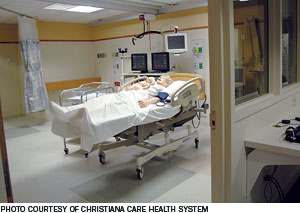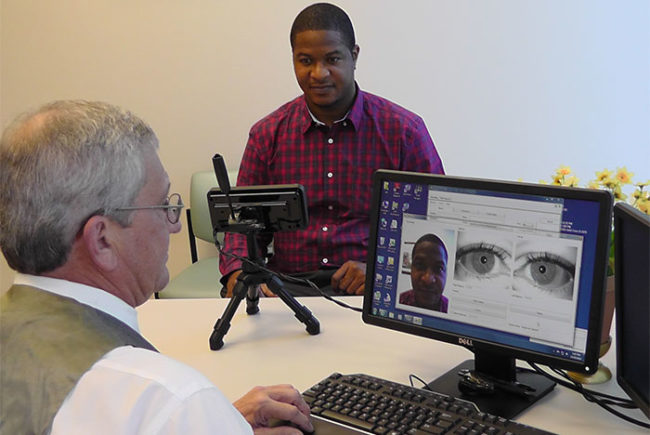Imagine a seven-room hospital, where doctors gain a firm foundation in surgical techniques, hand-to-eye coordination and repetitive skills exercises—before they pick up a scalpel to operate on a real patient.
 |
| A birthing mannequin in the training center's labor and delivery room. |
It happens every day at Wilmington, Del.-based Christiana Care Health System's virtual education and simulation training (VEST) center. The VEST Center is outfitted to function like a hospital, complete with a trauma bay, intensive care unit, operating room and standardized patient rooms.
But the patients are mannequins, adult and pediatric high-fidelity human patient simulators that breathe, speak, blink their eyes and respond to stimuli. Controlled by computers to simulate various conditions, the mannequins produce heartbeats, bowel sounds and blood pressure readings.
The VEST Center is one of only 106 member medical simulation centers in the United States, according to the Society for Simulation in Health Care.
"We have an obligation to our community, our families and ourselves to provide a training environment that does not compromise patient safety," says Glen Tinkoff, M.D., medical director, VEST Center. "Previously, the only way we could teach these skills was at the bedside."
Doctors gain crucial experience dealing with high-risk conditions that rarely occur so they can provide the best care when those situations arise. Audio and visual recordings enable learners to review and analyze their work.
The facility has received certification as a Level 2 Educational Institute by the American College of Surgery, a designation for providers of basic education in enhancing patient safety through simulation.
The 9,000-square-foot center is equipped with a working laparoscopy station with simulated tissues, an endoscopy/bronchoscopy simulator, and 3D visualization software and display, with more than 100 task trainers.





